Tarmo Martikainen, CEO at Coxa Hospital, Finland
Coxa increased the number of procedures performed by 17 percent and incorporated lean processes into its daily work.
Splitting two existing Mölnlycke® ProcedurePak® tays into four new trays – and colour coding for easier stock management – helped Coxa Hospital in Finland boost its efficiency.

Tarmo Martikainen, CEO at Coxa Hospital, Finland
Coxa increased the number of procedures performed by 17 percent and incorporated lean processes into its daily work.
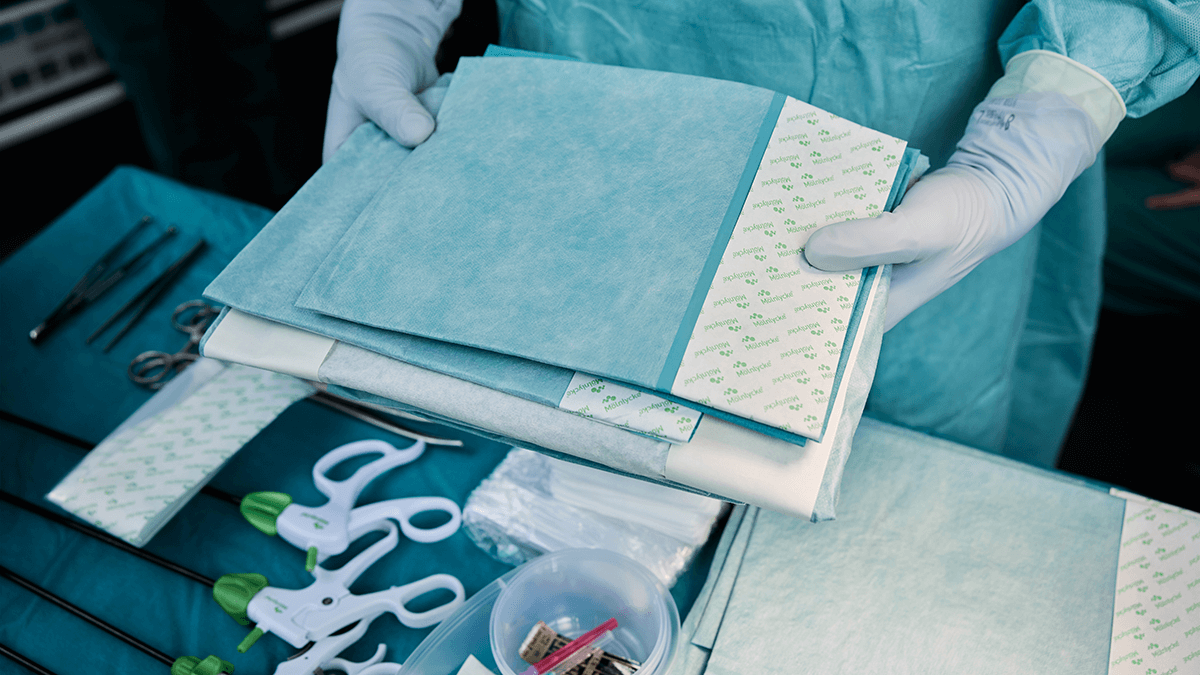
As time management in healthcare, particularly in the surgical field, becomes more important, hospitals are actively looking for more efficiency from fewer resources. One hospital in France achieved significant improvements to operating room efficiency, according to a Mölnlycke ProcedurePak efficiency study. By implementing surgical procedure trays, European hospitals achieved 40-55% time savings in the operating room, making it possible to carry out more surgical procedures – around 37% more procedures in one hospital in France. [Video section] France Cathérine Laurent, OR nurse, Hôpital Privé des Peupliers, Groupe Générale de Santé, Paris, France Exploring how to improve operating room efficiency Hospitals in Europe are traditionally supplied with single-packed sterile products for surgical procedures. For each procedure, the nurses in the operating room need to source surgical instruments in the operating room and collect required materials from the storeroom unit by unit and set it all up for each procedure. Other necessary steps to get the right material in place include stock-taking and ordering, as well as warehousing and transportation. Hospital management today is striving for the most efficient treatment procedures without compromising on quality or safety. Thus there is increasing pressure to handle more interventions while relying on unchanged resources1, 2. Optimising internal processes to improve efficiency has become more and more important, and more effective operating room inventory management, down to the procedure level, has been identified as a way to achieve greater efficiency in the operating room. Study aim: Quantifying time savings from procedure trays The aim of the study was to investigate the effects of and quantify time savings when implementing ProcedurePak trays. Method This was an open prospective study performed as case studies in different hospitals located in Germany, France and Sweden. A total of 26 different ProcedurePak trays were used. For each of the hospitals the single-use material process was studied, from ordering of materials to disposal. This process typically consists of 6 main processes: internal order and delivery, receiving of goods in the surgical department, preparation and clean-up of surgery, external order, receiving of goods via the purchasing department and invoicing. The steps can be broken down into sub-processes and activities. For example, the main process – preparation and clean-up – can be broken down into 14 sub-processes or 33 activities. Each step in the process was described and measured both before and after implementation of the Mölnlycke ProcedurePak trays. For every step of the process, the time and cost drivers were identified by studying practical use and measuring time. Total annual time-saving after implementation of ProcedurePak trays in Germany. Results: Across hospitals, 40-59% time savings achieved The results of the study show that following the introduction of ProcedurePak trays, time-savings in the single-use material process were between 40% and 59% in the hospitals studied. The magnitude of the time-savings depends on several factors, including the number of different ProcedurePak trays used, number of components in each tray and the number of procedures performed with trays. The largest time savings were found in the preparation and clean-up of surgery, which is a key metric for operating room waste management initiatives. But time savings were also shown in other process steps. The time savings were used in different ways depending on individual objectives of the hospital, for example: Performance of additional surgical procedures, giving patients more timely treatment and maximising use of OR resources In the French hospital 37% more surgical procedures were performed following implementation. In the German hospital the number of interventions increased by 18% per year. Training of staff. Conclusions The case studies show that significant time-savings (40-59%) can be gained through implementing Mölnlycke customised procedure trays for surgical procedures in the operating room. The freed-up time makes it possible to perform additional surgical procedures. The financial effect of this is an area for further research. [Download] France case
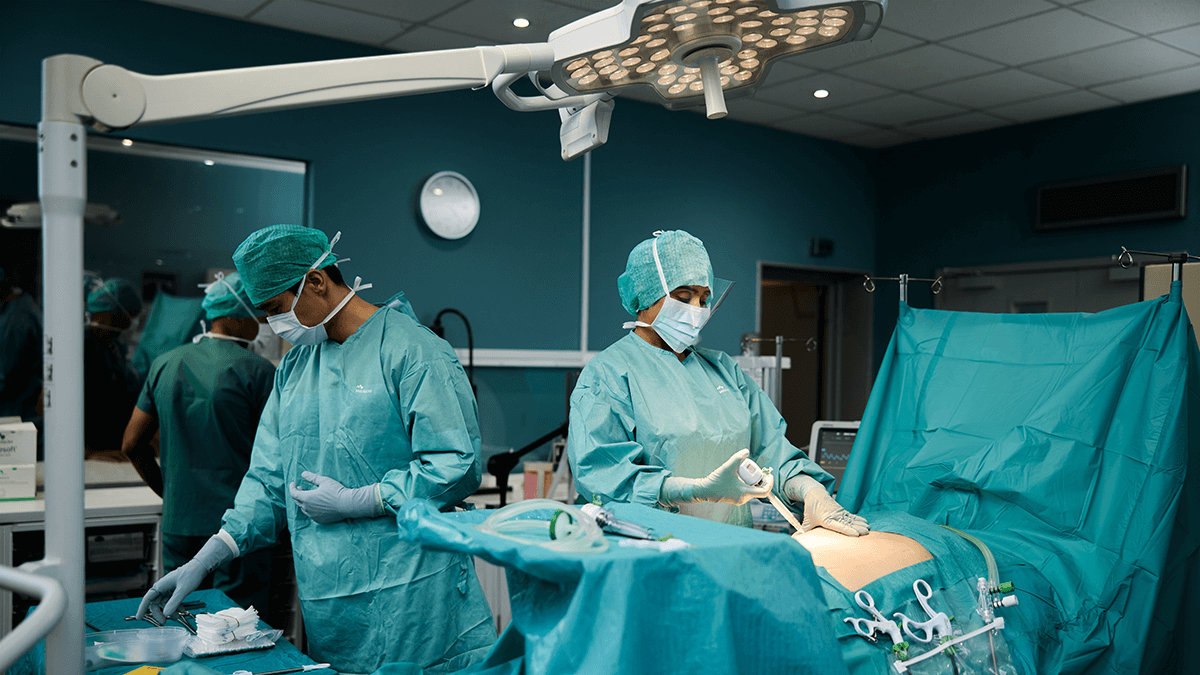
Speciality drapes for surgery not only offer the infection control measures required in an operating room with their single-use nature but also meet the specific needs of particular surgical interventions. And with consideration for OR efficiency, surgical drape packs can add greater efficiency and time savings. Speciality surgical drapes for OR safety and efficiency Mölnlycke offer a comprehensive range of speciality drapes. The operating room is home to all different types of drapes, including universal sets, but intervention-specific all-in-one drapes have relevant features integrated in the drape for easy and efficient draping. Integrated pouches and tube holders to create an organised working field. Speciality drapes designed specifically for a given procedure, such as a knee operation or orthopaedic operation, offer coverage and protection where it is most needed, thereby reducing the risk of contamination. With fewer parts to handle, fewer steps to take and a shorter, more efficient set-up time, the patient is draped and ready for the procedure to begin faster. This contributes to OR safety and efficiency by: Making setup faster and more efficient, cutting down on prep and overall time in OR Single-use or disposable surgical drapes support aseptic practice Enabling more procedure-specific patient safety and ease of use for OR personnel Speciality drapes are designed to be optimally folded – the folding allows for aseptic application, easy for one person to drape. Allow for easy and efficient draping by one person For saving time – 3 times faster than draping with a universal drape solution¹ Fewer parts, fewer steps – for reducing the risk of contamination²
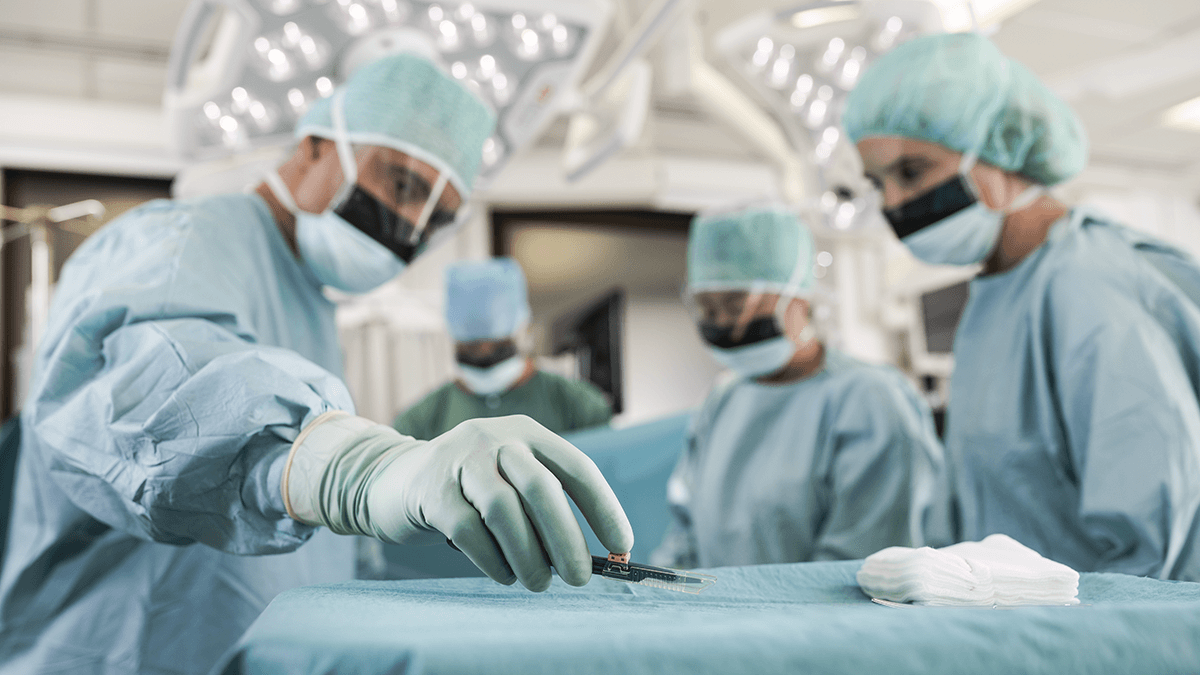
The last thing on your surgical team’s mind when hard at work in the OR is probably how much waste you are generating from single-use surgical instruments and drapes, or how much more efficiency you could gain from customised procedure-specific surgical trays. But as sustainability becomes a watchword for every industry, the single-use nature of antiseptic surgical environments is also coming under scrutiny. While patient safety leads as the most important consideration, hospitals continue to be beset by resource limitations balanced against new regulations that demand that they begin to operate more sustainably. Add to this equation the difficult-to-calculate environmental aspects of the operating room: from the CO2 expended in sourcing and producing the materials used in the production of OR goods to calculating the logistics of getting surgical trays and drapes and other surgical equipment into the hospital and properly distributed. But what if you could make your impact less opaque and gain clarity on exactly what impact the CO2 from your surgical business generates? Sustainable innovation Mölnlycke continuously innovates to offer the most sustainable solutions without compromising on the safety and quality of its products. By applying lifecycle thinking to existing products, the company proactively steers its product portfolios towards improved sustainability outcomes. An example includes a number of ISCC (International Sustainability and Carbon Certification) accredited sets of universal drapes offered by Mölnlycke. One of the three layers that make up the drapes is made of ISCC-certified renewable, biobased raw materials. As a result, an externally reviewed Life Cycle Assessment¹ showed these drapes to generate on average 20% less greenhouse gas emissions than traditional products. Guiding the conversion to sustainability Creating products that fulfil sustainability goals is one dimension of the issue. Another is ensuring that customers are aware of their existence and know the difference, providing clear guidance on a path toward conversion to more sustainable solutions. One such solution is a digital CO2 measurement tool that calculates the environmental benefits of choosing an ISCC drape over our standard product. Mölnlycke currently offers approximately 20 ISCC-certified drapes, consisting of up to 30% biobased material and a range of ISCC-certified surgical gowns. Demand for products using renewable, bio-based raw materials is particularly high in Scandinavia, the UK and Benelux, and is increasing in other markets as well. The calculator’s model includes the product’s entire life cycle, including Scope 1, 2 and 3.
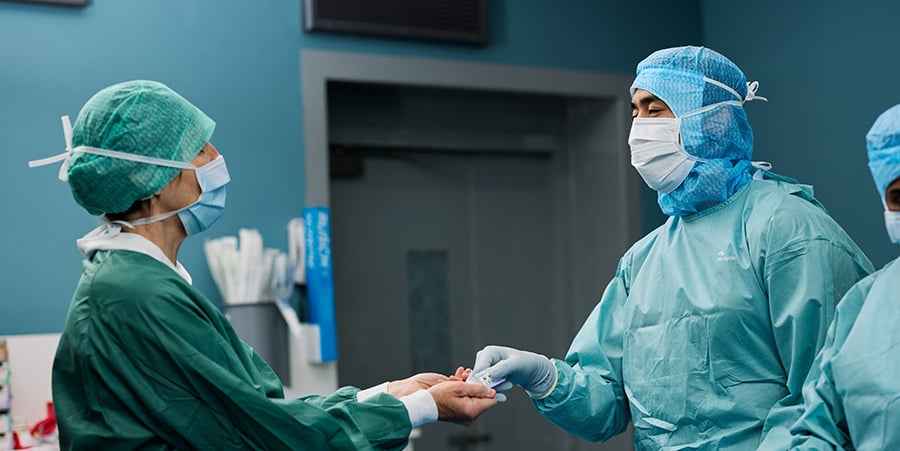
[video section] case berlin Dr Maurice Mommaerts, Maxillofacial Surgeon AZ Sint-Jan Bruges-Ostend hospital It has increased its number of interventions by 10% each year. The staff save time. They also comment on a more pleasant work environment and better patient care. AZ Sint-Jan Bruges-Ostend Av Maxillofacial Surgeon Dr Maurice Mommaerts said: ‘Mölnlycke Procedure trays contribute to a pleasant work environment, less stress and better use of time – in one word, efficiency.’ Director General Dr Hans Rigauts said: ‘Both nurses and doctors who use Mölnlycke Procedure Trays are clearly satisfied with them.’ [Download] case
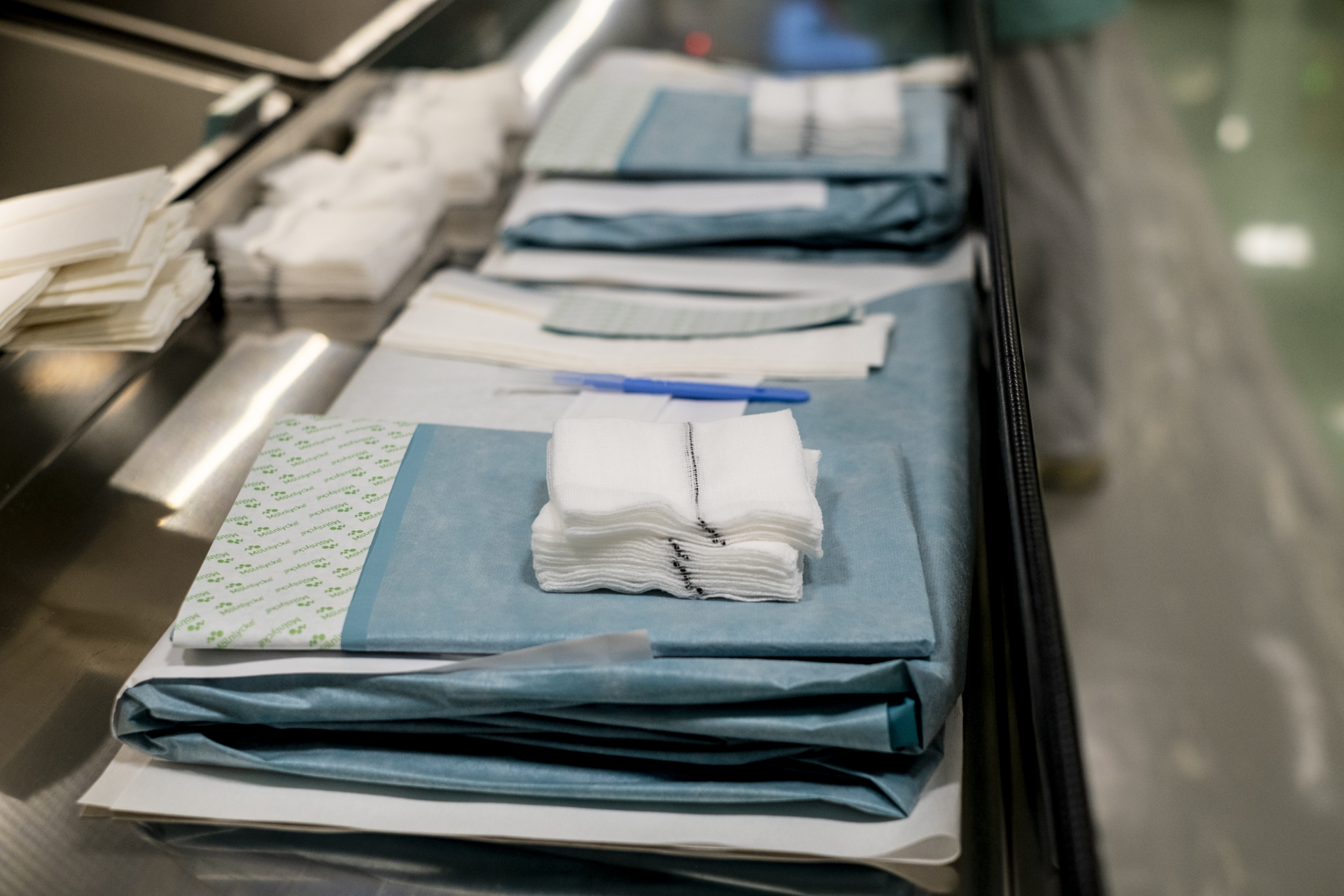
[Video section] Finland case Tarmo Martikainen, CEO at Coxa Hospital, Finland Coxa increased the number of procedures performed by 17 percent and incorporated lean processes into its daily work. [download] reference

Recovery has taken a long time, according to the panelists, because healthcare staff numbers have been stretched to capacity even before Covid. Challenges remain with staff fatigue issues, global supply chain surgical equipment sourcing, and continued disruptive waves of Covid. Listen to the full expert panel discussion to gain insights into how the healthcare systems across geographies are managing backlogs and tackling ongoing challenges. [Video section] covid Watch the recent Mölnlycke Talks Online round table discussion, where we catch up with our expert panel who shares their reflections on events since we last met, exactly 12 months ago. Discussed topics: How have the realities of the past year compared with the expectations we had 12 months ago? What have been the key learnings from the last year, that will help us moving forwards How do we balance patient expectations, whilst caring for the health care professionals tasked with tackling the elective surgery backlog How can industry best support you
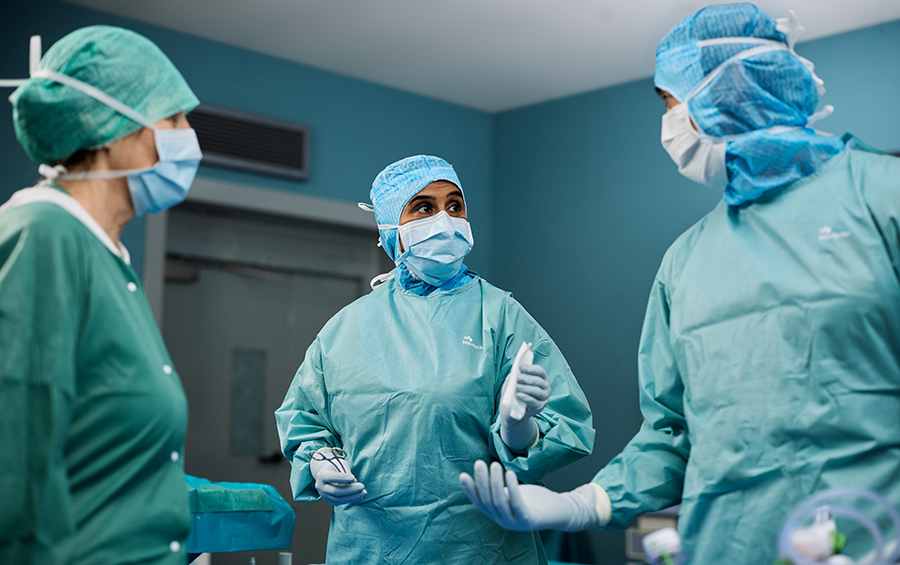
What makes up the most efficient OR workflow? The optimal OR setup involves not only processes and steps that OR staff take but also how they select, store and set up surgical instruments in the operating theatre. The interplay between how people work and the tools they work with influences how OR personnel find their most efficient flow and achieve increased output. The bigger goal is maximising value: gaining more capacity from OR resources at lower costs, with less waste and greater handling efficiency. Flexible OR efficiency Customised surgical procedure trays enable surgical teams to select all the components they need for specific interventions, which are then packed in a single package. The result helps achieve the greater goal of increased safety and efficiency in the operating room, and significant time, money, and waste savings. OR teams that have adopted ProcedurePak customised trays have achieved: Up to 40% reduction in complete preparation time1 Time savings through need for less preparation time, less opening and set-up time, leading to more procedures being carried out – up to a 37% increase in procedures performed1 Reduced packaging leading to less waste2 -- up to 90% less packaging waste2 3, Reduced product spending and logistic costs1,2 – including up to a 54% reduction in invoicing1 Greater accuracy and consistency for every procedure set-up2 The value of end-to-end handling efficiency Savings and efficiency come throughout the handling process – not just inside the OR. From the moment a surgical team configures their procedure-specific tray, through to stocking and handling, to surgery setup, all the way to invoicing and other administrative and procurement activities, every step creates efficiency and savings. These positive outcomes deliver real value you can calculate. For example, you might use your time savings to increase capacity to perform more surgical procedures. Maybe you will use the extra time to run extra OR staff training and education. Potential value-add areas include sustainability (including environmental, social and governance, or ESG), productivity and risk reduction. The value is real – how you claim that value is up to you. OR efficiency value areas: Sustainability Sustainability is a major driver for change in hospitals and in operating rooms, and the ESG agenda is one that organisations aim to derive value from rather than only seeing compliance as a cost. Adding sustainability to operating room efficiency metrics may make up one of the areas of value you can tap into. With customised procedure trays, you can achieve value from both environmental and people considerations. Up to 90% reduction in packaging waste, optimised stock levels and reduced transport are key contributions to environmental improvements. Considering staff needs, getting value from trays and workflows means facilitating improved ways of working, giving OR personnel more time to focus on patients and the things that matter most, and reducing employee stress. ProcedurePak trays simplify OR teams’ work2. OR efficiency value areas: Productivity Every healthcare organisation is under pressure to deliver more with less – safely. Particularly during periods of significant backlogs. How can hospitals reimagine surgical scheduling? Boosting OR capacity and productivity in challenging conditions is a challenge. But up to 70% of OR staff in a UK survey of 500 healthcare professionals4 agreed that customised procedure trays support improvements in operating theatre efficiencies. With ProcedurePak, you can increase the number of procedures you perform by up to 37%1, increasing the capacity of existing OR resources. Procedure-specific trays can also improve cost control per intervention. In more administrative and logistical terms, custom procedure trays can add value by reducing overtime, simplifying invoicing and tracking, and making order and delivery processes smoother and easier. OR efficiency value areas: Risk reduction Healthcare professionals are working under a great deal of pressure, and staff turnover and burnout are significant issues. Working with fewer resources and the requirement to spend substantial time on non-value-adding tasks such as picking and unwrapping individual components and other similar preparatory and clean-up tasks, surgical staff face a number of challenges that can all create risk in the OR. As both surgeons and operating room staff are forced to conduct more procedures with less resources, risk rises. Streamlining the OR workflow with customised surgical procedure trays, though, can contribute to easing staff stress and risk reduction. By requiring fewer packages overall, and saving time and effort in picking, handling, and opening packages, there is less risk of picking errors and less OR foot traffic. These steps lead to increased quality and cost control because the handling and logistics workflow is simplified and more easily managed. Achieving OR efficiency: You’re not alone With Mölnlycke, you’re not alone in starting and accelerating your OR efficiency journey. Taking a consultative approach, Mölnlycke works together with you as a partner to ensure that you achieve the greatest efficiency possible both from adopting ProcedurePak trays and through your OR workflows and practices. Partnership to find your flow and gain greater value How can you reach maximum value and efficiency in your OR? How can you increase output and see time, monetary and environmental impacts? You can influence these factors by finding your flow in the OR. We are here to help. Based on a process designed by the Institute for Workflow Management in Health Care (IWiG) in Germany, we offer a value report based on your specific situation. The report draws on several processes that examine materials management in the OR to help achieve greater time savings and process efficiencies. The value report generated provides an analysis of potential efficiencies and value gains, looking at your current surgical trays and comparing them against ProcedurePak trays customised for specific interventions. With Mölnlycke by your side, you can: Tap into more sustainable processes for both the environment and people/staff, including everything from quantifiably reduced waste and optimised stock levels to reducing staff stress and facilitating more time for focus on patients Protect and increase productivity, increasing the number of possible procedures, improving cost per intervention and simplifying processes Reduce risk, increasing the efficiency of logistics, and cutting down the risk for picking errors, risk due to the handling and opening of more packages and more. With value built in every step of the way, you can increase output with trays – not just in the operating room but throughout the hospital. We can show you how to get there, offering: Partnership in reviewing your current approach, capturing stakeholder insights, defining KPIs, identifying efficiency opportunities, applying expert advice and recommendations and formulating a tailored proposal and implementation plan. Support with evidence-based solutions, regular progress updates and check-ins to ensure opportunities and blockers are identified, full implementation assistance, training and education, and access to the self-serve Mölnlycke Portal. Partnership reviews and performance against KPIs, sharing of best practices, alignment and collaboration with other hospitals. [Card collection] image card link

The last thing on your surgical team’s mind when hard at work in the OR is probably how much waste your single-use surgical instruments and drapes generate, or how much more efficiency you could gain from customised procedure-specific surgical trays. But as sustainability becomes a watchword for every industry, the single-use nature of antiseptic surgical environments is also coming under scrutiny by regulatory bodies and even by patients. While patient safety leads as the most important consideration, hospitals continue to be beset by resource limitations balanced against new regulations that demand more sustainable and circular operations. Add to this equation the difficult-to-calculate environmental aspects of the operating room: from the CO2 expended in sourcing and producing the materials used in the production of OR goods to calculating the logistics of getting surgical trays and drapes and other surgical equipment into the hospital and properly distributed. But what if you could gain clarity on exactly what impact the CO2 from your surgical business generates? Sustainability roadmap Mölnlycke Health Care launched WeCare, the company’s 2030 sustainability roadmap, in 2021. The roadmap charts the actions the company is taking toward a sustainable future and supports the objectives of the Paris Agreement on climate change and the UN Sustainable Development Goals (SDGs). WeCare builds on three pillars integral to Mölnlycke’s business approach: Green mindset, Responsible relationships and Ethical business. These pillars influence Mölnlycke’s business models, partnerships, resource management and innovation, and state how Mölnlycke strives to create a work environment where everyone can excel. The WeCare program supports the company’s sustainable growth and determination to take a lead in sustainable healthcare and outlines the short and long-term targets that will ensure our progress, tracking it according to Global Reporting Initiative (GRI) standards or internal KPIs. These targets include a number of key measurable outcomes within the three pillars. For the green mindset, for example, we will become a net zero company by 2050, 100% fossil-free electricity use at manufacturing sites by 2024, zero waste to landfill at manufacturing sites by 2030, and more. For responsible relationships, we will provide a healthy, safe workplace for an engaged workforce, including a long-term target of zero injuries, gender oarity at director level and above by 2025, five different nationalities in executive leadership by 2025, and more than 10,000 lives improved with our global CSR program by 2025, among other goals. Finally, for ethical business, we act with integrity to ensure that 100% of employees receive annual training or awareness in the ethics and compliance space by 2023, that 100% of employees feel safe reporting concerns without fear by 2025, and that 100% of active distributors have completed our due diligence process by 2025. Guiding the conversion to sustainability Our own commitments and verifiable results illustrate our credibility in developing and supporting sustainable healthcare solutions and offering support and consultancy to our customers to help achieve sustainability through our partnership. Specific tools and standards can help to ensure that healthcare organisations can also achieve these ambitious targets. Sustainable standards: ISCC-certified solutions Mölnlycke continuously innovates to offer the most sustainable solutions without compromising on the safety and quality of its products. By applying lifecycle thinking to existing products, the company proactively steers its product portfolios towards improved sustainability outcomes. International Sustainability and Carbon Certification (ISCC) sets of universal drapes and a range of surgical gowns offered by Mölnlycke are one example of more sustainable, circular solutions and our commitment to using materials more efficiently. One of the three layers that make up the drapes is made of ISCC-certified renewable, biobased raw materials. As a result, an externally reviewed Life Cycle Assessment 1 showed these drapes to generate on average 20% less greenhouse gas emissions than traditional products. Calculating a more sustainable footprint Creating products that fulfil sustainability goals is one dimension of the issue. Detailing exactly how these products fulfil sustainability targets is another challenge. To help calculate the advantage, Mölnlycke has developed a digital CO2 measurement tool that calculates the environmental benefits of choosing an ISCC-certified drape over a traditional product. Mölnlycke currently offers approximately 20 ISCC-certified drapes, consisting of up to 30% bio-based material. Demand for products using renewable, bio-based raw materials is particularly high in Scandinavia, the UK and Benelux, and is increasing in other markets as well. The calculator’s model includes the product’s entire life cycle, including Scope 1, 2 and 3. We are transparent about our impact on the environment, people and society and want to support our partners to do the same.
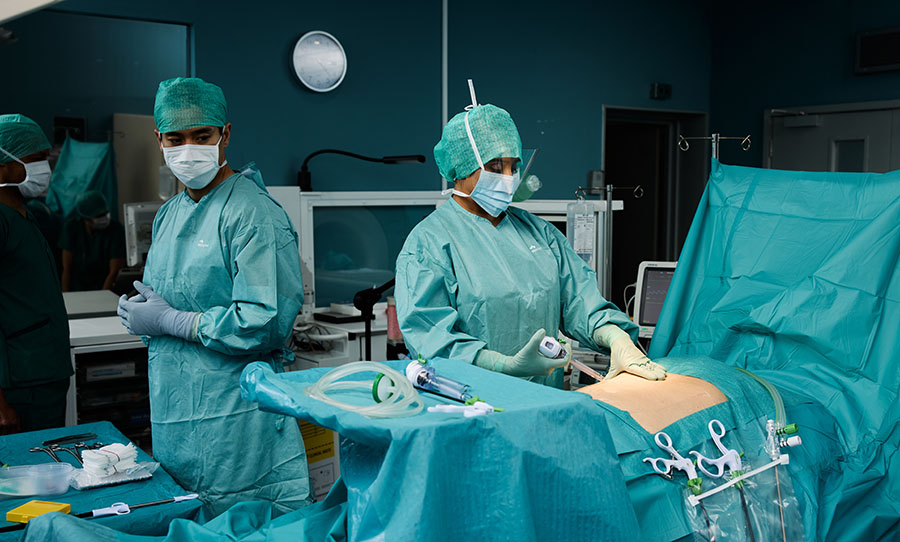
Patient outcomes and efficiency are dual drivers in the O.R. Laparoscopic surgery types, for example, are designed for safety and efficiency. And ensuring efficiency at every step is making sure that the instruments used in laparoscopic surgery are readily available to the surgical team when they need them. With surgical teams focused on the patient and getting the best outcome, they should not need to think about whether they have the right laparoscopic surgery tools on hand. Instead, everything they need for the complete surgical procedure could be bundled together, saving a significant amount of preparation time. Teams can focus on the patient instead of assembling the materials and components required¹, unwrapping single-packed instruments that could easily have been bundled together in a single sterile procedure pack. Laparoscopic surgery instruments – Customised procedure trays Surgical procedure trays built to your specifications offer the full range of surgical instruments and components your team needs for each individual procedure. Whether it’s laparoscopic surgery or gynecological surgery instruments your team needs, your procedure tray is customised for you, by you, for your specific procedure, your operating room and workflows/practices. All high-quality products, packed into convenient, cost-effective and easy-to-use procedure trays that save time and costs and help to reduce the possibility of error. Mölnlycke ProcedurePak trays are customisable, drawing from a full range of laparoscopic and gynecological surgery instruments to match your every surgical need. How safe is laparoscopic surgery? Why is laparoscopic surgery better than standard open surgery? Laparoscopy, also known as keyhole surgery, is less invasive, using smaller incisions, making it a viable choice for shorter procedure duration, faster patient recovery times and greater patient safety and less risk of infection. With laparoscopy, increasingly precise dissection is possible, making these surgeries more efficient for surgical teams and more favourable in terms of recovering from laparoscopy for patients. The less invasive the procedure, the swifter the patient’s journey to healing. What types of laparoscopic procedures and instruments? Laparoscopy is used to treat and diagnose conditions. Using only small incisions, a small camera, and a variety of specialised laparoscopic instruments, surgical teams can use laparoscopy to remove organs, repair hernias, perform hysterectomies and other gynecological surgeries, and much more. Common laparoscopic surgery types include cholecystectomy (gall bladder removal), colectomy (colon surgery), hernia repairs and gyn surgery (a commonly used term for gynecological surgery), all of which employ laparoscopy-specific instruments. What instruments are used in laparoscopic surgery? As laparoscopic procedures have become more common, the ability to offer minimally invasive surgery has changed the way operations are done and what kinds of laparoscopic surgery instruments are needed. Different laparoscopic surgeries require different instrument types and sizes, which are available as single-packed items or as a part of a procedure-specific laparoscopic instrument tray. From procedure-specific laparoscopy drapes for effective draping to sterile retrieval bags indicated for the quick and safe retrieval and extraction of tissue specimens, a comprehensive range of laparoscopic components is available. The full range of laparoscopic surgery tools for specific procedures is also available, including laparoscopic monopolar scissors, other monopolar instruments such as the L-hook electrode used for laparoscopic endoscopy and monopolar electrocautery, plume evacuation pencils for clearing the operating field of surgical smoke, high-pressure pulsed lavage solutions for cleaning bone and removing debris during joint procedures, suction and irrigation sets to help flush blood and tissue debris from the surgical site to aid visualisation during minimally invasive laparoscopic gynecologic, general, thoracic and urology procedures, ergonomically designed trocars for access to the peritoneal cavity, and Veress needles for creating a pneumoperitoneum. Choose your laparoscopic surgical instruments Get in touch today to discuss your laparoscopic instrument needs, and Mölnlycke can help you select the surgical components you need to build customised ProcedurePak trays for the laparoscopic procedures in the surgical range.
Get knowledge, learn about our products, get support and more.
Find jobs, our financial reports and more.
Mölnlycke corporateThis webpage contains information that is only intended for healthcare professionals. By selecting ‘Yes, I am’ you confirm that you are a healthcare professional.